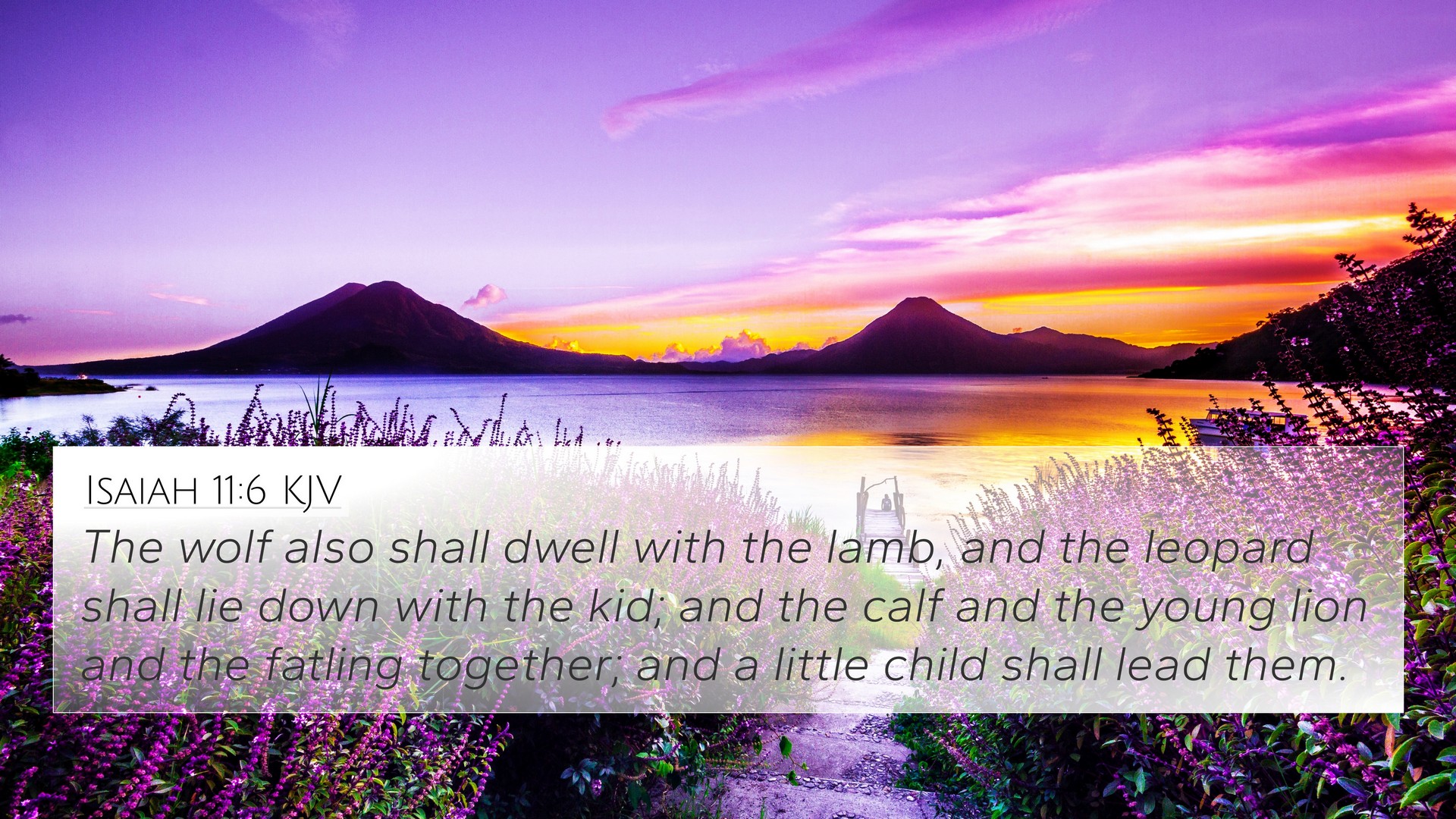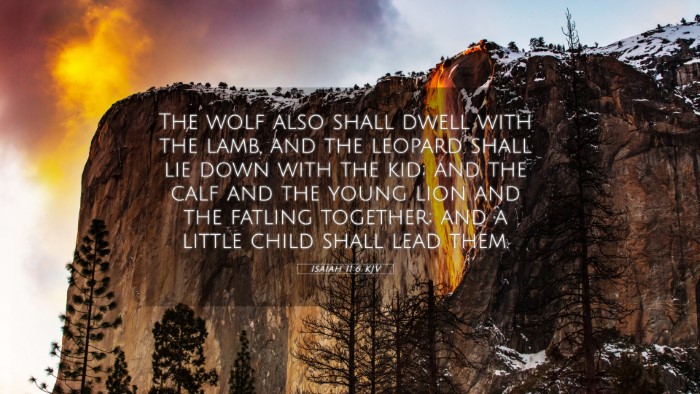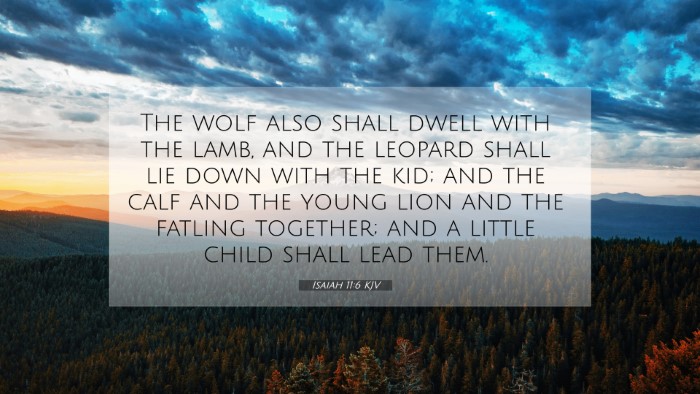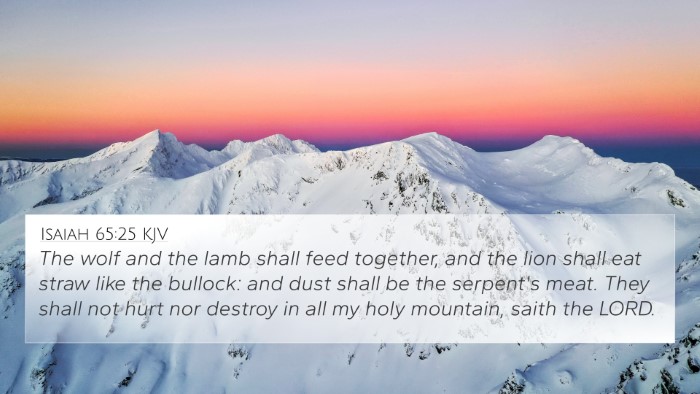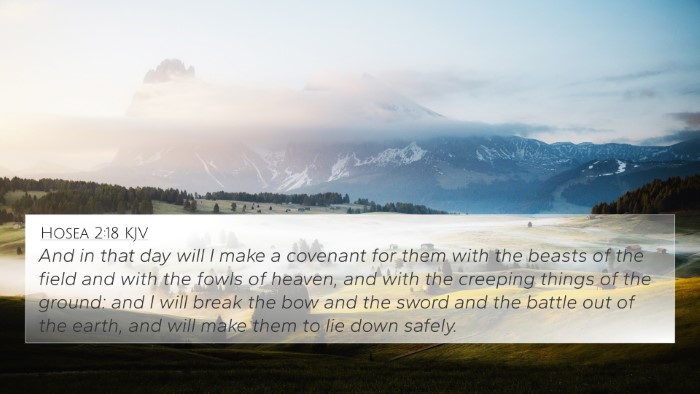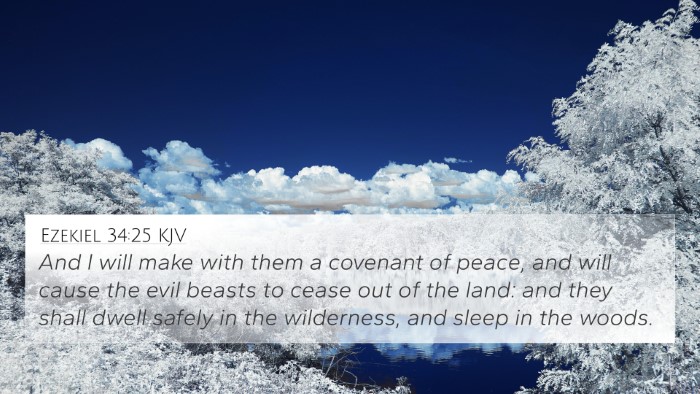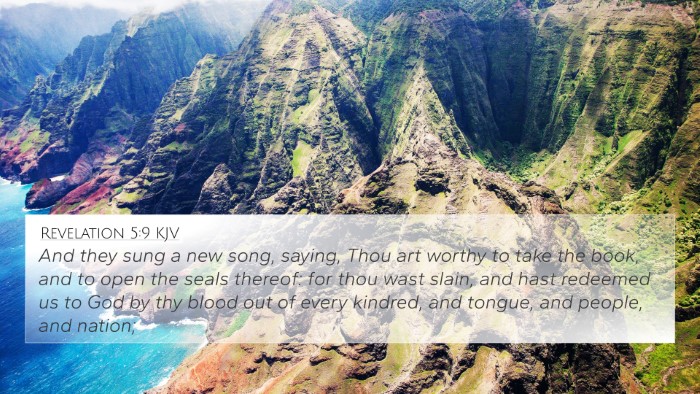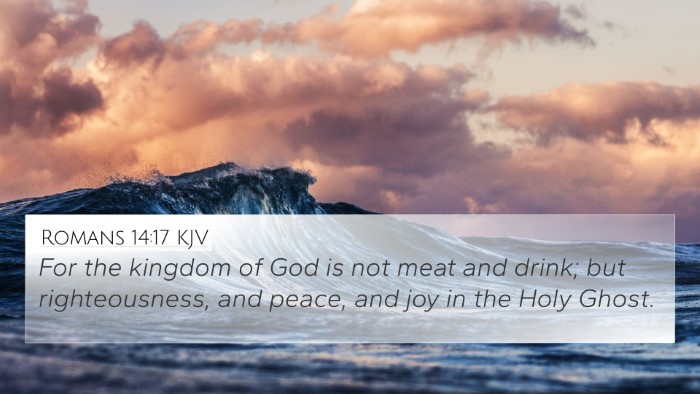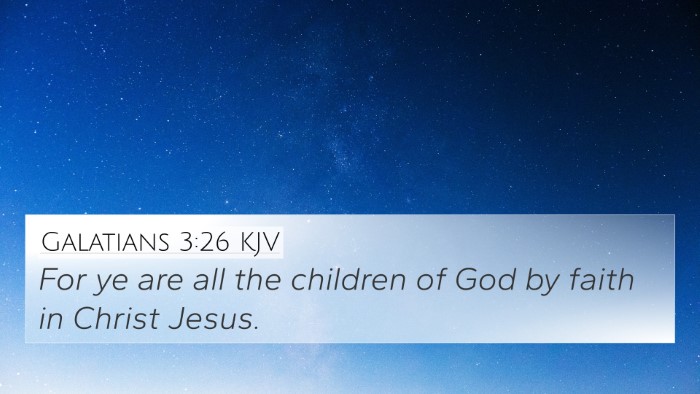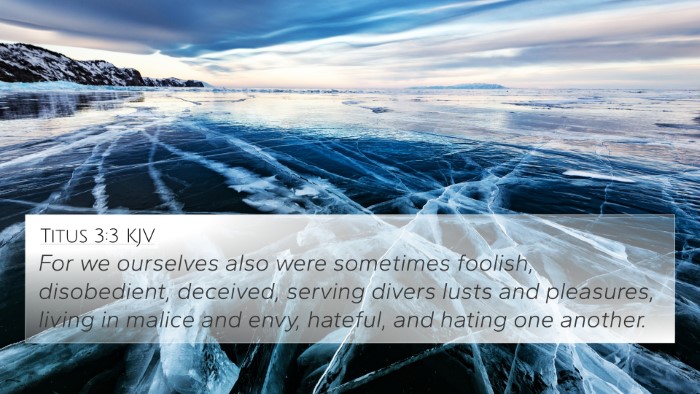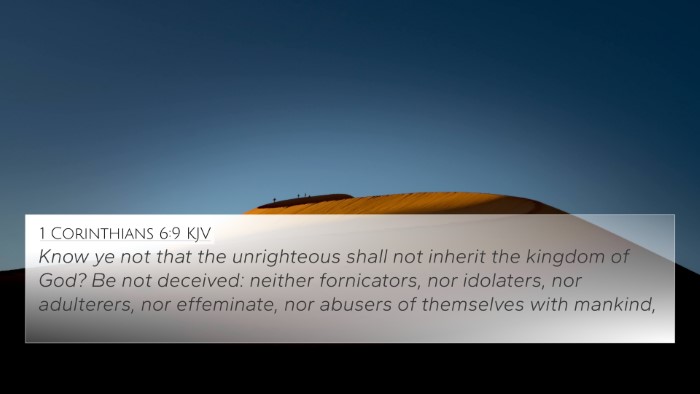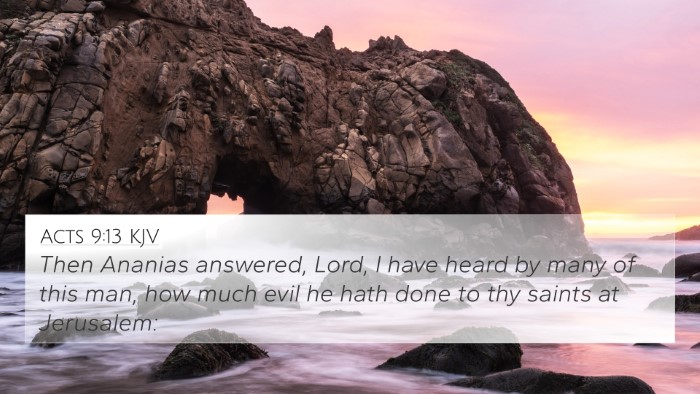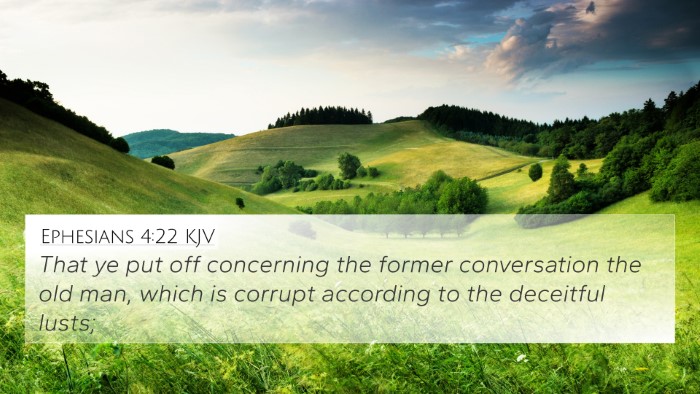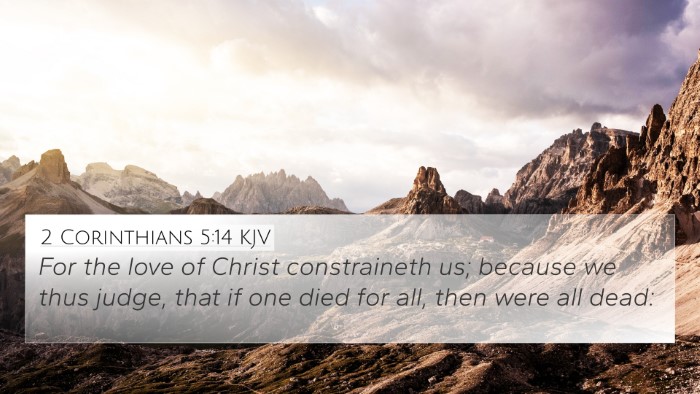Understanding Isaiah 11:6
Verse: Isaiah 11:6 - "The wolf also shall dwell with the lamb, and the leopard shall lie down with the kid; and the calf and the young lion and the fatling together; and a little child shall lead them."
Meaning and Interpretation
This verse from the book of Isaiah is rich with meaning and is often interpreted as a prophetic vision of peace and harmony in the future Kingdom of God. This prophetic passage draws attention to the radical transformation of relationships not only among humans but also between different species, symbolizing a peaceful existence that contrasts sharply with the current human experience of conflict and violence.
Commentary Insights
- Matthew Henry: He notes that the imagery used in this verse reflects a time when natural enemies will coexist peacefully. This signifies a broader theme of the redemption of creation and a reversal of the fall, pointing towards a messianic era characterized by tranquility and safety.
- Albert Barnes: Barnes emphasizes the implications of this verse for the messianic hope. The animals represent both innocence and ferocity, and their harmonious interaction indicates that the coming of the Messiah will bring about profound changes not only in the hearts of people but in the creation itself.
- Adam Clarke: Clarke offers insights on how this verse illustrates the innocence and simplicity of a child leading these wild creatures, symbolizing the peace that comes from divine justice. He underscores the grace of God as essential for such transformations, where the strongest no longer prey on the weak.
Cross-References
Isaiah 11:6 resonates deeply with various other scripture passages. Here are some notable cross-references:
- Genesis 1:30: God’s original intent for creation included harmony among all living beings.
- Isaiah 2:4: A vision of peace where nations will not learn war anymore aligns with the theme of coexistence.
- Romans 8:19-22: The creation eagerly awaits redemption, which corresponds to the promise of peace in Isaiah 11.
- Revelation 21:4-5: The ultimate assurance of God wiping away tears reflects the final fulfillment of peace.
- Micah 4:3: Also speaks of nations beating swords into plowshares, reflecting communal harmony.
- Matthew 18:3: Jesus highlights the importance of humility and childlike faith, paralleling the imagery of a child leading the animals.
- Hebrews 2:10-11: Discusses how Jesus, as the pioneer of salvation, restores relationships, echoing Isaiah's messages.
- Zechariah 8:5: Envisions children playing and elderly sitting in safety, a vision that resonates with the imagery of peace.
- Psalm 72:3: A prayer for the king's reign to bring righteousness and peace matches the ideals presented in Isaiah.
- John 10:11: Jesus as the good shepherd hints at a relational peace where even the most unlikely can find shelter and protection.
Thematic Connections
The themes prevalent in Isaiah 11:6 encourage us to explore:
- The Nature of God’s Kingdom: The coming kingdom is envisioned as one of peace, reconciliation, and order.
- Hope and Restoration: The verse indicates that there is hope for both humanity and creation, pointing towards divine restoration.
- Human Relationships: It emphasizes how the Messiah will mend broken relationships among people by establishing justice and peace.
- Childlike Faith: The leading of a child symbolizes faith that trusts in God’s goodness and promises.
Understanding Biblical Parallels
This verse invites readers to engage in a deeper, comparative Bible verse analysis. By cross-referencing biblical texts, we discover a tapestry of inter-Biblical dialogue that reinforces the overarching narrative of redemption. It’s a call to action for believers to seek out cross-references that enhance their understanding of scripture. Tools for Bible cross-referencing such as concordances, topical guides, and study Bibles provide resources for those seeking to establish links between different biblical narratives.
Conclusion
In summary, Isaiah 11:6 serves as a powerful reminder of God’s ultimate plan for peace and reconciliation, enveloped in rich symbolic language and imagery of creation's restoration. Embracing the insights gleaned from various commentaries, cross-references, and thematic connections aids our comprehension and provides depth to our study of the Scriptures.
